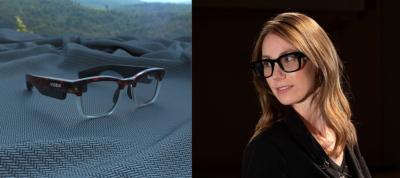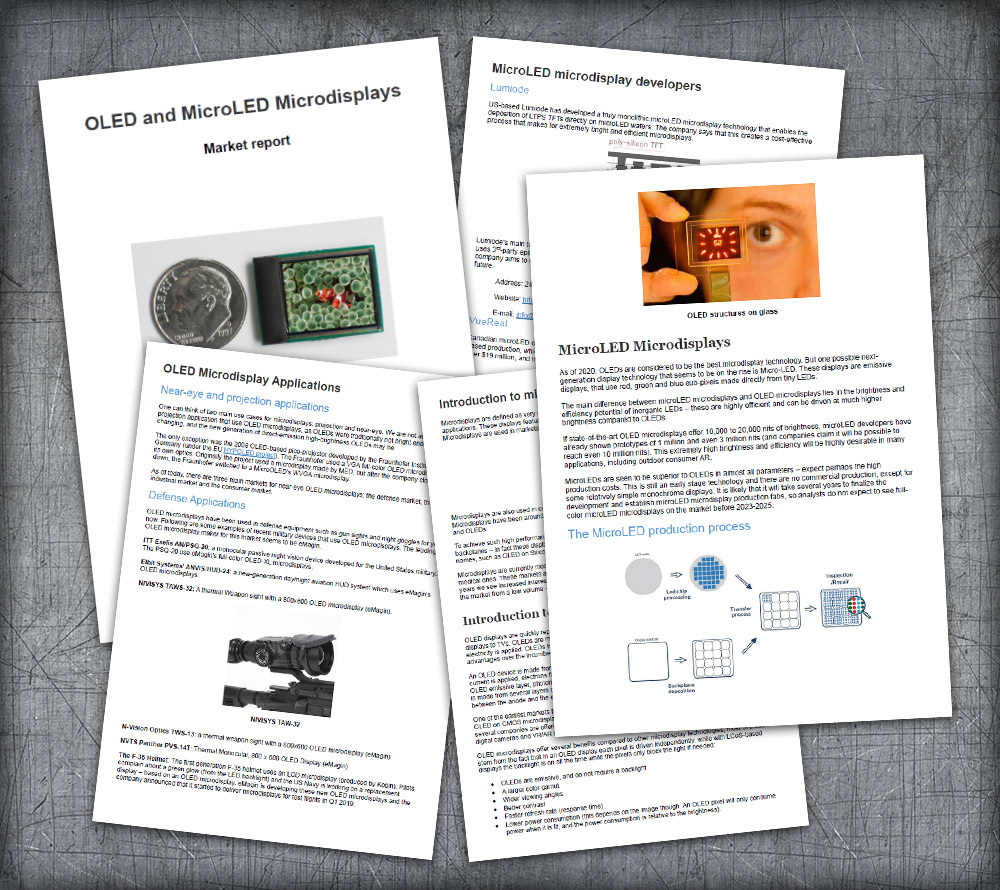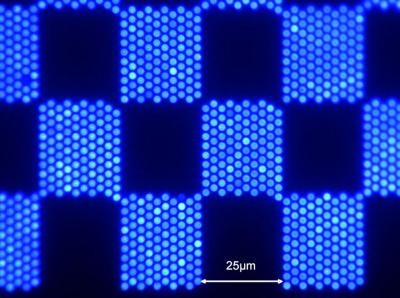MicroLED Microdisplays - Page 2
AUO stays committed to microLED technologies, plans to increase investments
During the company's recent conference call, AUO said that the company is undergoing a strategic transformation, focusing on mobility solutions, vertical solutions, and the display segment. The company gave several interesting statements regarding its microLED project and investments.
First of all, the company says that microLED is a priority for the company, and it plans to allocate more resources into its microLED projects. AUO says that its microLED technology is 'gaining traction', and that it is producing microLED displays commercially, but it did not detail more. The company believes it is the leader in microLED development.
Even Realities launch new AR smart glasses powered by JBD monochrome microLED microdisplays
Even Realities launched a new smart glasses product, called the G1 - a lightweight solution that is based on dual JBD 0.13" VGA monochrome green microdisplays.
The G1 Glasses are available for pre-order for $599 (or $749 with prescription lenses). Shipments will begin in August.
MicroLED-based AR and VR display innovation to be featured at MicroLED-Connect 2024
MicroLED-Connect is the world's first dedicated MicroLED conference and exhibition. The event, organized by TechBlick and the MicroLED Association, will take place at the High Tech Campus in Eindhoven, also known as "the smartest square kilometer in all of Europe", and will include an excellent conference program, masterclasses, tours - with a special emphasis on social/professional gatherings and networking opportunities.
One of the themes to be highlighted at the event is AR/VR, which is perceived as one of the key markets for microLED display makers thanks to the high-brightness and efficiency of microLEDs - making them an excellent candidate to drive future AR and VR headsets and products.
A spotlight on XPANCEO: a MicroLED Industry Association member
We're happy to interview Valentyn S. Volkov, PhD, co-founder and Scientific Partner at XPANCEO, as part of our series of interviews with MicroLED Industry Association members. Dubai-based XPANCEO develops eXtended Computing (XC) contact lenses, a next generation computing category - based on microLED microdisplays.
Valentyn S. Volkov, PhD, co-founder and Scientific Partner at XPANCEO, is an internationally renowned expert in the field of nanophotonics and advanced materials, with 20 years of experience at leading universities and research centers.
Q: Can you introduce your company and technology?
XPANCEO is a deep tech company specializing in advanced technology, working to evolve the next generation of computing through the development of an imperceptible and weightless smart contact lens that seamlessly integrates with the wearer's natural vision. This innovative lens revolutionizes the entire concept of human-technology interaction, reshaping the way individuals engage with both the physical and digital realms, encompassing social media, content consumption, and gaming. By consolidating all personal devices into a single entity, the lens metamorphoses daily activities into an expansive Extended Reality (XR) encounter, featuring sophisticated real-time health monitoring, comprehensive practical suggestions, capabilities such as night vision and zoom, and state-of-the-art privacy and security protocols.
MicroLED startups raise over $200 million in the past year
In the past year, microLED startups have raised over $200 million. As some companies (most notably Aledia and JBD in this case) mature and start to build production capacity, the need for funds grows, and we have indeed seen large investment rounds in these companies.
- Kubos Semiconductors: $2 million (May 2024)
- MICLEDI: $17 million (March 2024)
- Mojo Vision: $21.1 million (October 2023)
- Aledia: $129 million (October 2023)
- Comptek Solutions: $8.6 million (August 2023)
- QNA Technology: $4 million (August 2023)
- JBD: A4 round, estimated at $30-130 million (June 2023)
It is great to see these recent funding successes, which will hopefully lead to increased innovation and also initial production. It should be noted that most (if not all) of these financing rounds have been finalized before Apple made its decision to cancel its main microLED wearable project. We do not see Apple's decision as having a major impact on the long-term viability of microLED technologies or on the industry - but we do know that some investors are now hesitant to invest in this market following Apple's project cancellation.
A new edition of our MicroLED and OLED Microdisplay Market Report released today
Today we published a new edition of our MicroLED and OLED Microdisplays Market Report, with all the latest information. The AR/VR market is of high interest and companies are investing heavily in microdisplay technologies, both OLEDs and MicroLEDs. The new edition offers 14 updates and bringsg this report up to date, including the latest prototypes and technologies announced at Displayweek 2024.
Reading this report, you'll learn all about:
- The advantages of OLED and MicroLED microdisplays
- The microdisplays that are available on the market today
- Information on all companies involved in this market
- Future technologies and roadmaps
The report package also provides:
- A list of all OLED microdisplays on the market
- A list of all OLED and MicroLED microdisplays makers
- Microdisplays spreadsheet
- Over 25 datasheets, presentations
- Free updates for a year
This microdisplays market report provides a great introduction to MicroLED and OLED microdisplays, and covers everything you need to know about the current status of the market and industry. This is a great guide if you're considering to adopt OLED microdisplays in your product, if you're looking to learn more about next-generation micro-LEDs and if you want to understand this industry better.
Vuzix to develop microLED-based AR display systems for Garmin
Vuzix announced that it has signed a multi-phase development contract with Garmin for next generation nano-imprinted waveguide-based display system. These systems will also use microLED microdisplay engines.

Vuzix will develop and deliver in succession, waveguide based optical systems with full custom microLED projection engines, and then ultimately production units.
VueReal launches a hybrid microLED-LCOS microdisplays
MicroLED developer VueReal launched a hybrid microLED-LCOS microdisplay, branded as ColourFusion microDisplay, targeting AR applications. The basic idea is to use a low-density microLED microdisplay, with an LCOS on top that increases the resolution.
VueReal says that this solution enables high resolution, high grayscale and color depth, high contrast, and unprecedented low power consumption. VueReal developed innovative power-saving algorithm and a backplane that supports variable frame rates. The microLED unit is deposited using VueReal’s proprietary MicroSolid Printing technology.
Q-Pixel developed an active-matrix 6800 PPI microLED microdisplay based on its colot-tunable LED technology
US-based Q-Pixel announced that it has developed a new 3K x 1.5K, a 1.1x0.6 cm (6800 PPI) microLED microdisplay. Q-Pixel says that this is the world's highest resolution color microdisplay - but they actually mean the highest density full-color microdisplay.
Q-Pixel's technology is based around a single-pixel color-tunable microLED device, and the company's displays are produced using a monolithic process. In May 2023, the company announced a 5,000 PPI full-color microdisplay. In fact, later in 2023 the company announced a 10,000 PPI microLED microdisplay, but the 10,000 display was a passive-matrix microdisplay, and the newly announced display is an active-matrix one.
MICLEDI closes its Series A funding round to accelerate its microLED microdsiplay development
Belgium-based microLED microdisplay developer MICLEDI announced that it closes its Series A Funding round, to accelerate its development of high performance microLED arrays. VCs that participated in this round include imec.xpand, PMV, imec, KBC and SFPIM.
MICLEDI did not disclose the funding it received, but it did say that total funding in the company to date is nearly $30 million. In 2021, the company raised 7.1 million Euro, and in 2020 MICLEDI raised 4.5 million Euro in its Series-A round (which is now referred to by MICLEDI as its seed round, together with the 2021 round). Following its 2020 round we talked with the company's CEO who explains the company's technology and goals. If our calculation is correct, this new Series A round totaled around $17 million.
Pagination
- Previous page
- Page 2
- Next page






